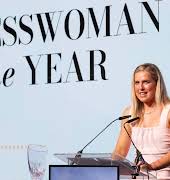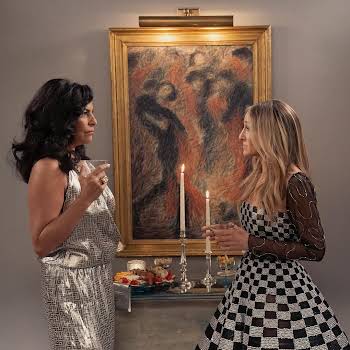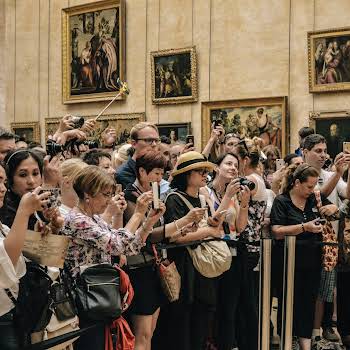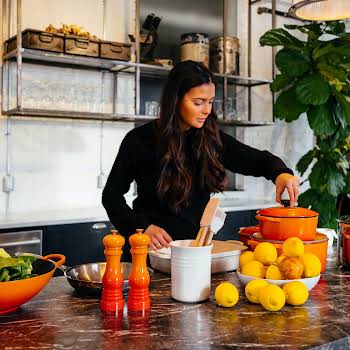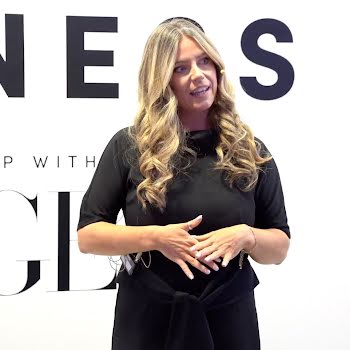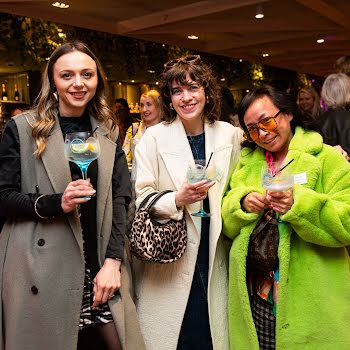
By IMAGE
10th Feb 2019
10th Feb 2019
With all the criticisms surrounding social media’s effect on society, Sophie White argues that it’s had an equally positive impact, offering solace and support to those in need of community.
Much debate has raged over the negative aspects of social media in recent years. Social media has been blamed for myriad ills of the tech age, from a rise in depression, anxiety and misinformation to a decline in everything from wellbeing to sex drive and human interaction.
The “scourge of social media” has become a kind of idiom in itself, the phrase yielding more than 8 million returns on a Google search – histrionic headlines heralding the end of days as evidenced by our preoccupation with Facebook, Instagram and Twitter abound.
Last year, even Facebook’s former vice president of user growth, Chamath Palihapitiya, expressed his shame at the role he played in creating tools “that are ripping apart the social fabric of how society works”. Yikes.
Related: The most sinister side of the 10-year social media challenge
It’s damning criticism, and there is a case to be made for how shallow the validation machines of Facebook and Instagram are. Trading likes for selfies is probably one of the most profoundly strange things to have come about in our lifetime. I still do it, of course (gotta get those likes), but I recognise that it’s an odd practice.
In the early days of Instagram, it was a space-obsessed with surface, synonymous with the toxic practice of manipulation of images with accompanying apps like Facetune altering users’ features to make them more beautiful.
However, boiling our use of social media down to its basics like outfits of the day and selfies is disingenuous – we are not all scrolling the squares to admire each other’s angles, though I do appreciate a good effort in that department. As ever, we humans are looking for deeper connection, and in certain pockets of social media, particularly Instagram, we are finding just that.
Online community
Instagram allows people full control of their own narrative while still amplifying their message; they can also be anonymous but still share their personal perspective. It provides a platform that manages to be both more public and yet more intimate than traditional media. Many of these communities feel more like a reciprocal, group therapy-type environment than the one-way street of content consumption. When I had my first baby, I didn’t have a smartphone.
By the time my second child came along, I had caught up on technology, and even had a newly minted Instagram account. The contrast to my first child’s babyhood was incredible. The crippling loneliness and confusion of new motherhood was soothed by the warm glow of an iPhone in the dark of the nightfeed – just as nature intended!
Here was a vast community of women who shared my appetite for talking about the minutia of newborn sleep cycles. Women who were willing to share their stories of postnatal depression, miscarriage and birth trauma that they may provide solace to someone else out there. Someone like me.
The pockets of healing to be found on Instagram are in stark contrast to the app’s superficial reputation. @selfloveliv is a mental health advocate who suffers with bipolar disorder. She writes about her illness with startling honesty and shares her day-to-day life living with bipolar. Other accounts chronicle mental illnesses that are often sidelined in the cultural conversation, and widely misunderstood as a result.
@schizophrenia.support is an account run by Renee, who was diagnosed in her early twenties and uses her account to share writing on her experiences of the illness. Because of the visual aspect of the platform, there’s scope to present the message in unique ways, with videos, pictures and the Insta-favourite spilt screen snaps, where two pictures are posted side by side.
Split screen
Spilt screen was originally mostly used to display body transformations, but has recently been co-opted for infinitely more interesting uses. Often, the split screen might be used to illustrate recovery from an eating disorder or show the same woman smiling and happy in one, pale and anxious in the other, overlaid with text like “suffering from a mental illness… still suffering from a mental illness” to illustrate the slippery nature of an invisible illness and underscore the point that looks can be deceiving.
The comments provide a forum for users to share their perspective and experiences and, very often, express gratitude to the account, particularly those who have recently been diagnosed or are in early recovery
The pictures and split screens allow users to subvert the medium and use the language of Instagram to illustrate a salient point that is often hard to grasp about mental illness; users are challenging the viewer to see beyond the image.
Under a typically Insta-friendly bikini shot, @schizophrenia.support writes: “Mental illness came into my life at a point when I was physically my strongest… A healthy body won’t make you invincible to mental illness. Mental illness has nothing to do with how you look or feel physically.”
With her sunnies and suntan, the image performs the dual function of normalising an illness that is very often gravely misrepresented, and challenging the oft-held misconceptions of what mental illness really looks like.
“I’ve personally always found it easier to be myself on Instagram – sometimes sharing with strangers is easier than your best friends,” says Sarah Tobin. Tobin is founder of Tapping for Mums, a service to introduce women suffering from PTSD, loss, anxiety and depression to Emotional Freedom Technique, a method of self-healing.
“Facebook is a social network of friends, so most of the time you know the people – you might see them at work, or in your local community, they might be family and friends. On Instagram, I’ve found that your network widens so much more; you find people with the same interests as you, with the same difficulties too.”
Helping and healing
Initially, Tobin set up her account to share her interest in photography; then after she lost her first child Alice, just days after her birth, she was overwhelmed by the support she received online. “The fact that people reached out, they cared, they supported us, they cheered me on and were so happy when I announced we were pregnant again, really had a part to play in my healing process.”
Related: The social media movements changing our definition of beauty
Tobin’s online community inspired her to launch her business, where she runs one to one sessions and offers guided tapping. “I keep scrolling and seeing so many women struggling on a daily basis. Primarily, the main complaint is anxiety but I’m now interested in the root cause of the anxiety and work with people on that. I could see there are many mums suffering from traumatic births, PND, PTSD, baby loss, and having seen how tapping works to heal trauma, I knew I had to do something to help.”
The conversations on Instagram tend to be different than those taking place on other platforms. Facebook and Twitter can be more confrontational spaces, while Instagram feels intimate and safer somehow. You can follow topics through hashtags as well as specific accounts. “On Instagram, you can search for a particular topic and then find lots of people who are posting content about it,” says Sarah.
“Mental health conversations have exploded in recent years, and I hope, and presume, that will only continue. The more people are sharing, the more others will feel safe to share; the ripple effect will continue and more people will heal. That’s what I hope and believe, anyway.”
This article was orignally published in the January/February issue of IMAGE magazine.





